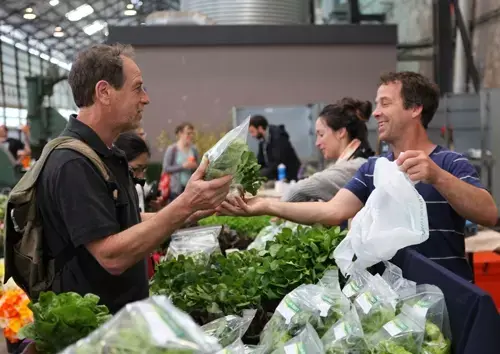How to Choose the Right Suburb for a Sustainable Lifestyle
- kyle36034
- Jan 11
- 6 min read

Choosing the right suburb for a sustainable lifestyle goes beyond finding a place to live – it’s about selecting a community that aligns with environmental consciousness, economic viability, safety, and overall well-being. Whether you’re looking for energy-efficient homes, access to green spaces, or renewable energy adoption, here’s a detailed guide to help you make an informed decision.
1. Access to Public Transportation
Public transportation is a cornerstone of sustainable living. Suburbs with robust public transit systems reduce dependency on private vehicles, cutting down carbon emissions and saving money.
• Key Features to Look For: Proximity to bus stops, train stations, and tram lines.
• Examples of Sustainable Suburbs: In Melbourne, areas like Brunswick and Coburg have excellent train and tram connections, making them ideal for eco-conscious commuters.
• Research Tool: Public Transport Victoria Journey Planner
• Benefits: Less reliance on cars lowers fuel consumption, reduces traffic congestion, and improves air quality.

2. Walkability and Cycling Infrastructure
A walkable suburb allows you to accomplish daily activities on foot or by bicycle, reducing the need for driving and fostering a healthier lifestyle.
• What to Check: Sidewalk availability, pedestrian safety, and dedicated cycling lanes.
• Walkability Scores: Use tools like Walk Score to assess how pedestrian-friendly a suburb is.
• Examples: Fitzroy in Melbourne is known for its high walkability, with shops, cafes, and public amenities within easy reach.

3. Green Spaces and Biodiversity
Access to parks, gardens, and nature reserves is essential for physical and mental health. Green suburbs offer cleaner air, opportunities for outdoor activities, and support for local biodiversity.
• Questions to Ask: Does the suburb have sufficient parks, playgrounds, and reserves? Are there efforts to protect local flora and fauna?
• Examples: Suburbs like Eltham in Melbourne are celebrated for their lush green landscapes and strong community focus on preserving the environment.
• Local Council Parks Finder: Parks Victoria
• Bonus: Proximity to green spaces can increase property values and improve residents’ quality of life.
4. Energy-Efficient Housing
Energy-efficient homes save money and reduce your carbon footprint. Look for properties with features that minimize energy consumption.
• Key Features: Solar panels, energy-efficient lighting, proper insulation, and double-glazed windows.
• Suburbs Leading in Energy Efficiency: Aurora in Victoria is a planned community known for sustainable housing developments.
• Energy Rating Finder: Your Home Energy Rating System (NatHERS)
• Why It Matters: Energy-efficient homes lower utility bills and contribute to a sustainable future.

5. Safety of the Suburb
Safety is a critical factor when choosing where to live. A safe suburb ensures peace of mind for residents and creates an environment where families and individuals can thrive.
• What to Research:
• Crime rates: Check data from Crime Statistics Agency Victoria.
• Community engagement: Suburbs with active neighborhood watch programs often have lower crime rates.
• Examples: Suburbs like Wattle Glen and Warrandyte in Melbourne are known for their low crime rates and strong community ties.
• Why It Matters: A safe environment promotes well-being and can also positively impact property values.
6. Proximity to Good School Zones
For families, living in a good school zone is a top priority and plays a significant role in determining a suburb’s livability.
• Benefits of a Strong School Zone:
• Quality education opportunities for children.
• Increased property value as demand for homes in reputable school zones remains high.
• How to Research:
• Look up school rankings and academic performance reports on platforms like My School.
• Ensure the property falls within the desired school’s catchment area.
• Examples: Suburbs like Glen Waverley and Balwyn in Melbourne are highly sought after for their exceptional school zones.

7. Community Initiatives and Engagement
Living in a suburb with an active and engaged community enhances your ability to contribute to and benefit from sustainability efforts.
• Look for: Suburbs with community gardens, local environmental groups, and sustainability workshops.
• Examples: Suburbs like Northcote in Melbourne have strong grassroots movements for community sustainability projects.
• Community Finder Tool: Check local council websites for community initiatives and programs.
• Benefits: Engaged communities create a stronger social fabric and foster collaborative environmental efforts.
8. Proximity to Local Produce and Markets
Access to local food sources reduces your carbon footprint by minimizing food miles.
• What to Look For: Farmers’ markets, organic stores, and community-supported agriculture programs.
• Examples: Suburbs like Prahran in Melbourne host vibrant markets where you can purchase fresh, locally grown produce.
• Farmers’ Markets Guide: Australian Farmers’ Market Association
• Why It’s Important: Supporting local agriculture promotes sustainability and strengthens the local economy.

9. Water Management Systems
Suburbs with sustainable water practices are better equipped to handle droughts and reduce water wastage.
• Features to Identify: Rainwater harvesting systems, efficient stormwater management, and greywater recycling.
• Examples: Some newer developments, like those in Casey in Melbourne, integrate innovative water management systems.
• Water Sustainability Information: Melbourne Water
10. Renewable Energy Adoption
Suburbs that lead in renewable energy adoption demonstrate a commitment to reducing carbon emissions.
• Features: Look for widespread use of solar panels, wind turbines, or community energy initiatives.
• Examples: Sunbury in Melbourne is an area with high solar panel adoption rates.
• Renewable Energy Resources: Clean Energy Council
• Benefits: Renewable energy reduces electricity costs and supports a cleaner environment.
11. Sustainable Urban Planning
Thoughtful urban planning integrates residential, commercial, and recreational spaces to minimize commuting and maximize convenience.
• Characteristics: Mixed-use developments, pedestrian-friendly streets, and smart zoning policies.
• Examples: Suburbs like Docklands in Melbourne offer sustainable urban designs with a focus on work-life balance.
• Urban Planning Insights: City of Melbourne
• Advantages: Reducing commuting times and fostering a sense of community.

12. Affordability and Livability
While sustainability is important, affordability and overall livability should also be key considerations.
• What to Look For: Suburbs offering a good balance of housing costs, access to amenities, and employment opportunities.
• Examples: In Melbourne, suburbs like Preston are both affordable and vibrant, catering to diverse lifestyle needs.
• Affordability Insights: Domain Property Market Reports
How to Choose the Right Suburb
1. Research Thoroughly: Use tools like Google Maps, Walk Score, and community websites to gather data.
2. Visit the Area: Spend time in the suburb to understand its vibe, safety, and amenities.
3. Speak with Locals: Residents can provide valuable insights about the area’s livability and sustainability.
4. Engage Experts: Consult real estate agents, urban planners, or sustainability experts for tailored advice.
Choosing a suburb for a sustainable lifestyle involves considering multiple factors, such as public transportation, walkability, green spaces, safety, and school zones. A sustainable community not only promotes a healthier and more environmentally friendly lifestyle but also enhances your quality of life and offers value as a long-term investment.
Features like energy-efficient housing, community engagement, and proximity to local farmers’ markets significantly impact your living experience and environmental footprint. When making your decision, be sure to conduct thorough research, visit the area in person, and consult professionals to ensure you select a suburb that aligns with your personal needs and long-term plans.
By evaluating these factors comprehensively, you can achieve your sustainability goals while benefiting economically and socially, enjoying a more balanced and livable lifestyle.
Disclaimer
This article provides general information for choosing a sustainable suburb and does not constitute financial, environmental, or real estate advice. Please conduct further research and consult with professionals to make decisions tailored to your circumstances. Market conditions and sustainability efforts can vary, so verify current information before proceeding.




